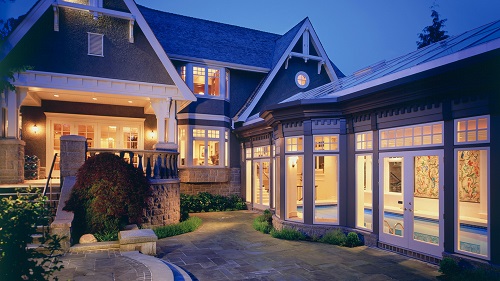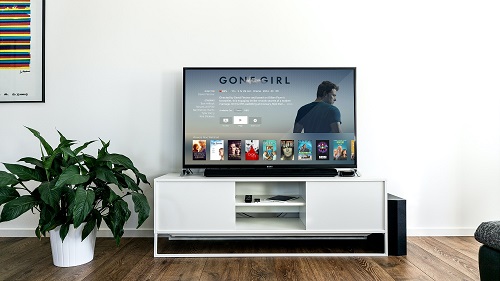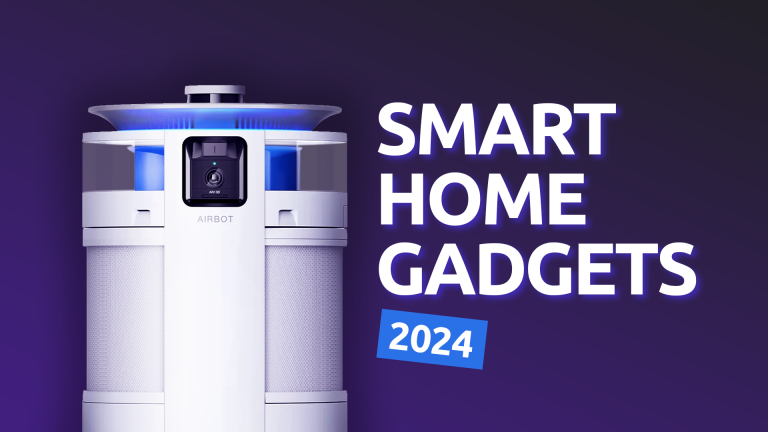Welcome to the future of home living! In today’s fast-paced world, convenience and efficiency are at the forefront of our minds. And what better way to embrace these modern ideals than by transforming your humble abode into a smart sanctuary? That’s right, we’re talking about intelligent home automation – a revolutionary way to streamline your daily routines while enjoying the ultimate comfort and control.
Imagine being able to adjust the temperature, dim the lights, and lock your doors with just a simple voice command or a tap on your smartphone. Picture walking into a perfectly lit room that automatically adjusts its ambiance based on your mood. With smart home technology, all these dreams can become reality.
But before you dive headfirst into this exciting realm of possibilities, it’s important to have a clear vision of what you want from your smart home. Are you looking for enhanced security? Energy savings? Or perhaps an effortless entertainment experience? Defining your automation goals is crucial in creating a personalized system that caters specifically to your needs.
In this blog post, we’ll guide you through the process of building your own intelligent paradise step by step. From choosing the right devices and deciding between DIY installation or professional help, all the way through integrating various components seamlessly – we’ve got you covered. So let’s begin our journey towards making every day smarter and more convenient!
Defining Your Smart Home Vision: Identifying Your Automation Goals
When it comes to creating your smart home, the first and most important step is defining your vision. Take some time to envision how you want your home to function and what tasks or activities you’d like to automate. Are you looking for increased security? Energy efficiency? Convenience? Or maybe all of the above?
Consider your daily routine and think about areas where automation could make a significant difference. For example, if you’re constantly forgetting to turn off lights when leaving a room, incorporating smart lighting controls can help save energy and reduce your bills.
Security may be another top priority for many homeowners. With smart security systems, you can have peace of mind knowing that your property is protected even when you’re away. From video doorbells that allow remote monitoring to motion sensors that trigger alerts on your phone, there are countless options available.
Entertainment enthusiasts might focus on integrating their audiovisual equipment seamlessly with their smart devices. Imagine effortlessly controlling everything from streaming services and gaming consoles to sound systems with just one universal remote or voice command.
Identifying your automation goals will pave the way for selecting the right devices and technologies that align with those objectives. So take some time to brainstorm what matters most to you in terms of convenience, safety, energy savings, entertainment – whatever makes YOUR dream smart home come alive!
Choosing the Right Devices: Factors to Consider in Home Automation
Choosing the right devices for your smart home is a crucial step in building an efficient and convenient automation system. With so many options available on the market, it can be overwhelming to decide which ones are best suited for your needs. Here are some factors to consider when making your decision.
Think about what specific tasks you want your smart devices to perform. Are you looking for security features like cameras and door locks? Or maybe you’re more interested in energy-saving solutions like smart thermostats and lighting controls. Understanding your priorities will help narrow down your choices.
Compatibility is key. Ensure that the devices you select will work seamlessly together within a unified ecosystem. Look for products that support popular protocols such as Wi-Fi, Zigbee, or Z-Wave to ensure smooth integration with other devices.
Another important factor to consider is scalability. As technology evolves, so do our needs and expectations. Choose devices that have room for expansion and can easily adapt to future upgrades or additions.
Consider the user interface of each device as well – how easy is it to use? Opting for intuitive interfaces will make managing and controlling your smart home effortless.
Don’t forget about budget constraints! Set a budget before starting your shopping journey and stick to it while considering all the above factors.
By carefully considering these factors, you’ll be able to choose the right devices that align with both your automation goals and personal preferences!
DIY or Professional Installation: Weighing Your Options
When it comes to setting up your intelligent home automation system, one important decision you’ll need to make is whether to go the DIY route or enlist professional help. Both options have their pros and cons, so it’s crucial to weigh them carefully before making a choice.
Opting for a DIY installation can be appealing for those who enjoy tackling projects on their own and have some technical know-how. It allows you the freedom to customize your setup according to your specific needs and preferences. Plus, with many user-friendly smart devices available in the market today, setting them up yourself can be relatively straightforward.
However, it’s essential to consider that DIY installation might not be suitable for everyone. Depending on the complexity of your desired automation system and your level of expertise, you could run into challenges along the way. Troubleshooting issues may require time-consuming research or even additional purchases.
On the other hand, hiring professionals ensures a seamless installation process without any guesswork on your part. With their expertise and experience in smart home installations, they can provide valuable insights and recommendations tailored specifically to your requirements.
While professional installations generally come at an added cost compared to going the DIY route, they offer peace of mind knowing that everything will be done correctly from start to finish. Additionally, professionals can assist with more intricate setups involving complex integrations or larger-scale projects.
Determining whether DIY or professional installation is right for you depends on various factors such as budget constraints, technical skills, project scope and timeline considerations. Take these into account as you weigh your options – finding what works best for you will ensure a successful start towards building your ideal smart sanctuary!
Integration and Compatibility: Creating a Unified Smart Home Ecosystem
One of the key factors to consider when building an intelligent home is integration and compatibility. In order for your smart devices to work seamlessly together, they need to be able to communicate with each other. This means choosing devices that are compatible with each other and can integrate into a unified ecosystem.
When selecting smart devices, it’s important to do your research and ensure that they work well together. Some devices may use different communication protocols or platforms, which can make integration more challenging. Look for devices that support popular standards like Wi-Fi, Bluetooth, or Zigbee as these are more likely to be compatible with a wide range of products.
To create a unified smart home ecosystem, consider investing in a central hub or controller. These devices act as the brain of your smart home system, allowing you to control all connected devices from one place. They often come with their own app or interface where you can set up automation routines and manage device settings.
Another aspect of integration is ensuring that your chosen smart home platform supports multiple brands and types of devices. For example, if you have Philips Hue lights but also want to add Nest thermostats and Ring doorbells, make sure the platform you choose can accommodate all these different brands.
It’s also worth considering whether the platform offers third-party integrations. This allows you to connect your smart home system with other services and apps such as voice assistants like Amazon Alexa or Google Assistant. Integration with voice control can greatly enhance the convenience and usability of your smart home setup.
Creating a unified smart home ecosystem requires careful consideration of device compatibility and integration options. Choose devices that are compatible with each other and look for a central hub or controller that supports multiple brands. Additionally, explore platforms that offer third-party integrations for enhanced functionality.
Learning the Ropes: Tips for Navigating Your New Smart Home
As you embark on your journey to build a smart sanctuary, it’s important to equip yourself with the knowledge and skills needed to navigate your new smart home. Here are some tips to help you get started:
1. Start small: Begin by automating one or two aspects of your home and gradually expand from there. This will allow you to familiarize yourself with the technology and ensure that everything is working smoothly before adding more devices.
2. Read the manuals: Take some time to thoroughly read the user manuals for each of your smart devices. Understanding how they work and their various features will enable you to make full use of their capabilities.
3. Experiment and customize: Don’t be afraid to experiment with different settings and configurations for your smart devices. Tailor them according to your preferences and lifestyle, whether it’s adjusting lighting schedules or creating custom voice commands.
4. Stay updated: Keep an eye out for firmware updates or software upgrades for your smart devices. Manufacturers often release updates that improve performance, add new features, or enhance security.
5. Secure your network: As you add more connected devices, it becomes crucial to secure your home network against potential cyber threats. Change default passwords, enable encryption protocols like WPA2 for Wi-Fi networks, and consider using a separate guest network for visitors.
6. Seek support when needed: If you encounter any difficulties or have questions about setting up or troubleshooting specific devices, reach out for support from the manufacturer’s customer service or online communities dedicated to home automation enthusiasts.
By following these tips, you’ll quickly become adept at managing and enjoying all the benefits of a fully automated home environment!







